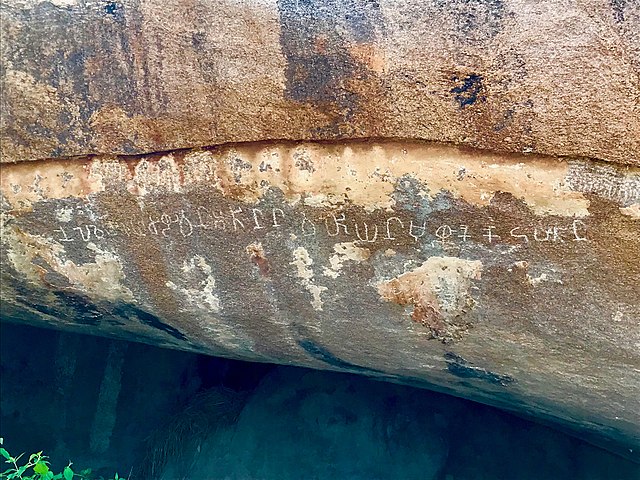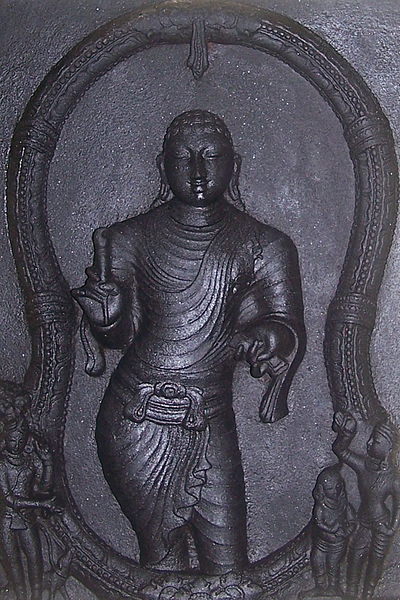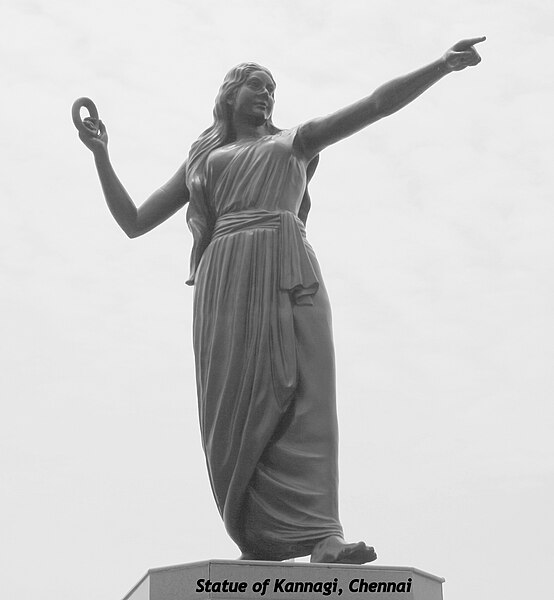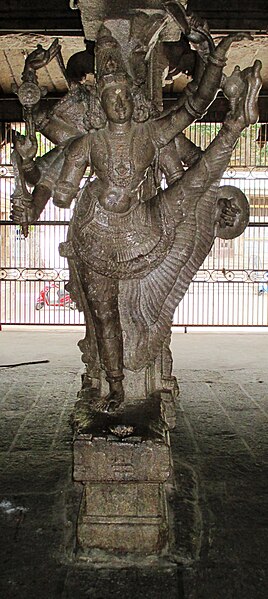Cilappatikāram, also referred to as Silappathikaram or Silappatikaram, is the earliest Tamil epic. It is a poem of 5,730 lines in almost entirely akaval (aciriyam) meter. The epic is a tragic love story of an ordinary couple, Kannaki and her husband Kovalan. The Cilappatikaram has more ancient roots in the Tamil bardic tradition, as Kannaki and other characters of the story are mentioned or alluded to in the Sangam literature such as in the Naṟṟiṇai and later texts such as the Kovalam Katai. It is attributed to a prince-turned-monk Iḷaṅkō Aṭikaḷ, and was probably composed in the 5th or 6th century CE.
Statues and reliefs of Ilango Adigal are found in India and Sri Lanka. He is believed to be the author of Cilappatikaram.
Statue of Kannagi at Chennai Marina Beach.
Sculpture of Vishnu as the god who measured the 3 worlds in Kallalagar Temple.
Image: Kannagi statue, Marina beach, Chennai
Old Tamil is the period of the Tamil language spanning from 300 BCE to 700 CE. Prior to Old Tamil, the period of Tamil linguistic development is termed as Pre Tamil. After the Old Tamil period, Tamil becomes Middle Tamil. The earliest records in Old Tamil are inscriptions from between the 3rd and 1st century BCE in caves and on pottery. These inscriptions are written in a variant of the Brahmi script called Tamil Brahmi. The earliest long text in Old Tamil is the Tolkāppiyam, an early work on Tamil grammar and poetics, whose oldest layers could be as old as the mid 2nd century BCE. Old Tamil preserved many features of Proto-Dravidian, the earliest reconstructed form of the Dravidian including inventory of consonants, the syllable structure, and various grammatical features.The Satavahanas also issued bilingual coins featuring Middle Indo-Aryan language on one side, and Desi language on the other side.

A 2nd-century BCE Tamil Brahmi inscription from Arittapatti, Madurai India. The southern state of Tamil Nadu has emerged as a major source of Brahmi inscriptions in Old Tamil dated between 3rd to 1st centuries BCE.





